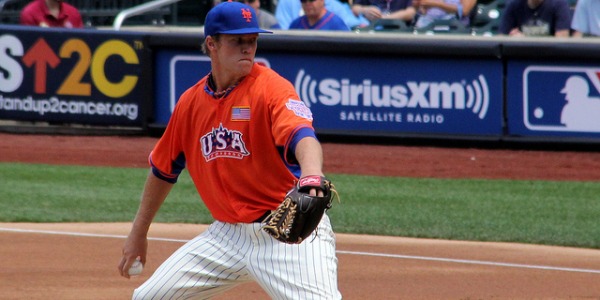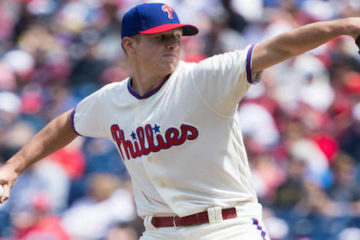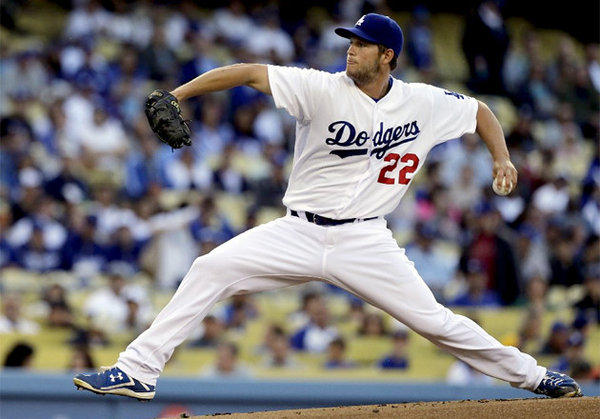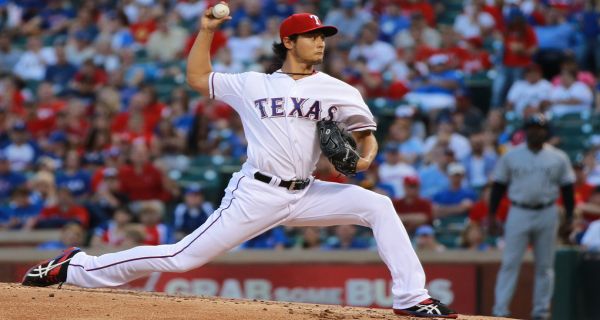2015 Fantasy Baseball: Pitchers With a Spike in K-BB%
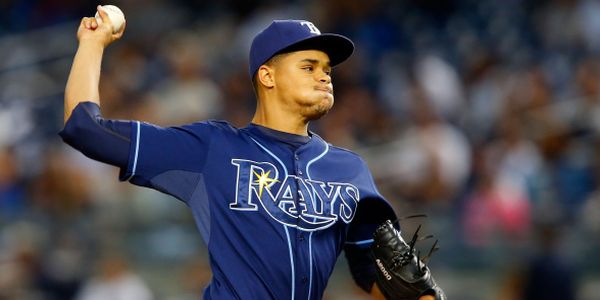
Each and every baseball site you visit can probably provide you with a strategy to identify players to target or avoid via trade. One of my favorite pieces of data to use is the ERA-FIP statistic, provided to us by our friends at FanGraphs, which you can read more about here. But this time around I’m looking at changes in strikeout-minus-walk rates between 2014 and 2015 to see if we can’t identify some names that look like they’re improving or regressing in their ability to miss bats.
If you’re not yet acquainted with K-BB%, you can read more about it here on FanGraphs. And if you’re not quite buying into using K-BB% just yet, read this piece by Glenn DuPaul at Beyond the Boxscore and hopefully you’ll buy in.
An “average” K% according to FanGraphs comes in at 18.5% while an “average” BB% comes in at 8.5%, leaving us with an average K%-BB% at what should be 10%. And just as another reference, the current league average for K%-BB% among starting pitchers is 11.8%. I used this data to guide my research. And you can see the chart that I used to compile said data at the end of this post.
We do need to proceed with a bit of caution in using the data below as most teams are just about eight turns of the rotation into the ‘15 season. At any rate, here are a few players that have seen a nice spike or dip in their K-BB% rates so far this year as compared to their ‘14 campaigns. Only players who qualified in both 2014 and 2015 made the list.
All data courtesy of FanGraphs and through Tuesday, May 12th.
Chris Archer | Rays | +9.9%
In each of the past two seasons, Archer has seen a spike in strikeout rates backed by a spike in swinging strike rate. But the jump from 2014 to 2015 is much more significant than the jump from 2013-2014. We can see that he’s pounding the zone (52.1% Zone%) and nailing the first-pitch strike (64.4% F-Strike%) better than he did over that time frame. He’s also using the slider more often (37% SL%), and it’s coming in at a higher velocity than it has in year’s past (87.3 mph vs. career 85.9 mph). The slider always seemed to be his best pitch to induce whiffs, especially with two-strikes, but he’s going to it even more this season (~55%) to both righties and lefties in two-strike counts, likely at the root for the spike in K-BB%. I’m trying to find some reasons to tell you to be careful with this guy, but I can’t. He’s a stud.
James Shields | Padres | +9.3%
The spike in strikeouts is real. The spike in swinging strikes is sitting right behind those strikeouts backing it up. Both the 30.9% strikeouts and the 13.5% swinging strikes are career-bests for the new Padre through eight starts. The change in league and being afforded the opportunity to deal to opposing pitchers may very well be the culprit in the case of the inflated strikeout rate. Shields’ peripherals aren’t exactly pretty — he owns a 3.91 ERA (4.84 FIP) — but a 2.99 xFIP and 2.79 SIERA lead us to believe that there are better days ahead. His unlucky 25% HR/FB% isn’t sustainable either, so don’t let the 12 home runs allowed scare you away from making a play for Big Game James.
Travis Wood | Cubs | +9%
Southpaw Travis Wood is 2-2 with a 4.96 ERA (4.37 FIP), a 1.22 WHIP and a 18% K-BB%. He’s getting ahead in the count better than he’s ever done (64.8% F-Strike%) and is also inducing swinging strikes at a career-best 8% clip. The ratios fail to impress fantasy owners, but those in need of strikeouts in deep leagues might want to take a gamble on the Cub who is currently available in about 85% of Y! leagues.
Shelby Miller | Braves | +6.5%
Shelby Miller landed in Atlanta this offseason in a deal that returned Jason Heyward to the Cardinals. Since arriving, Miller has done nothing but impress. Just five of his seven starts were considered “quality” because Miller was pulled after five frames, but he’s failed to allow more than two earned in each of his seven starts for Atlanta. Additionally, Miller has fanned six or more opponents in 4-of-7 starts to begin the year. Not bad. However, Miller has been the beneficiary of some batted ball luck — opponents are hitting just .203 on balls in play — evidenced by the difference in his 1.60 ERA and 3.41 FIP. And he’s stranding close to 88% of batters that get on base, although his career average is just a 79.5% LOB%. Love the spike in strikeouts, but it took him from a “below average” K-BB% to just over “average.” And with Miller being fifth among qualified starters in ERA-FIP, I may hold or sell Miller for a reasonable return on investment, but I’m not buying if I have to overpay for what he’s done already.
Tomorrow we’ll break down those pitchers who’ve seen a significant dip in K-BB% compared to last season’s efforts. Here’s the chart for you to take a quick look at before we run that piece.
You can also download the chart directly, here.


